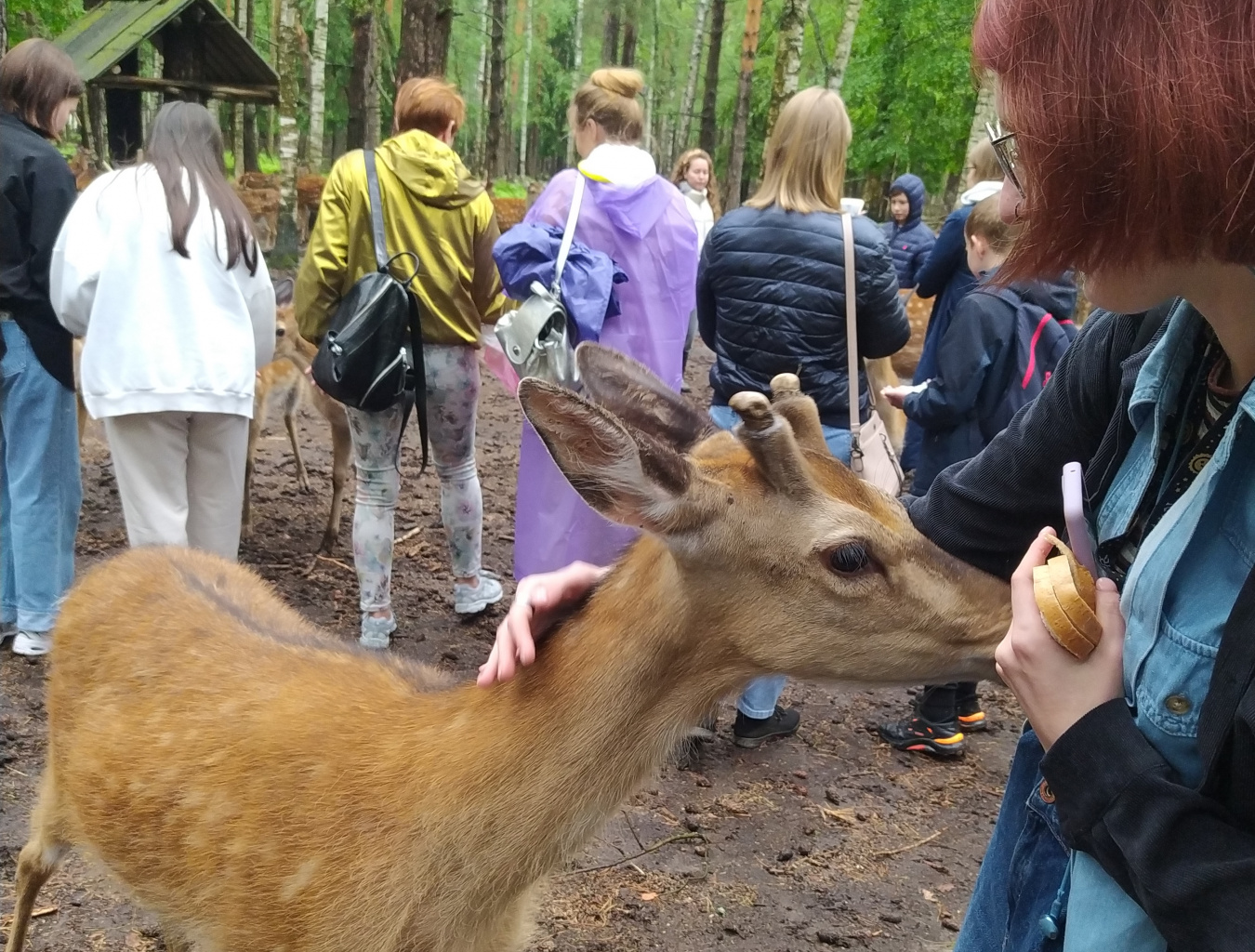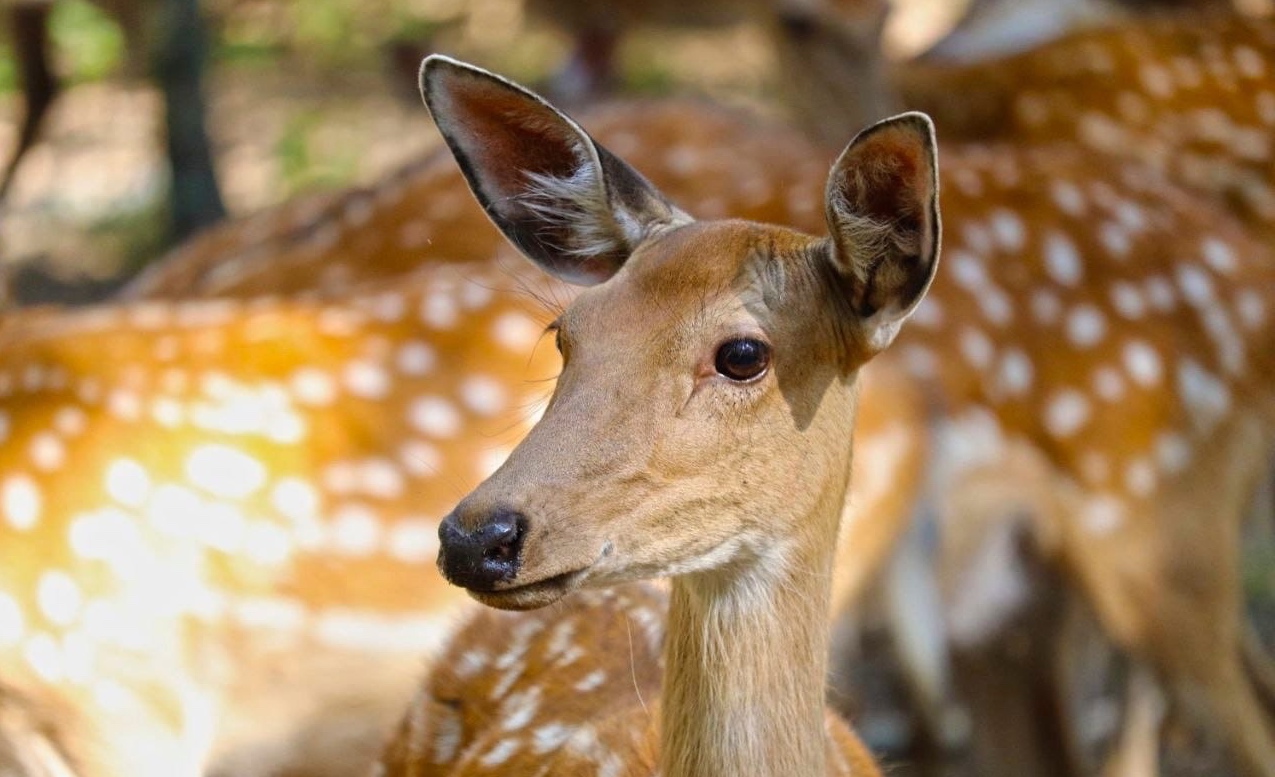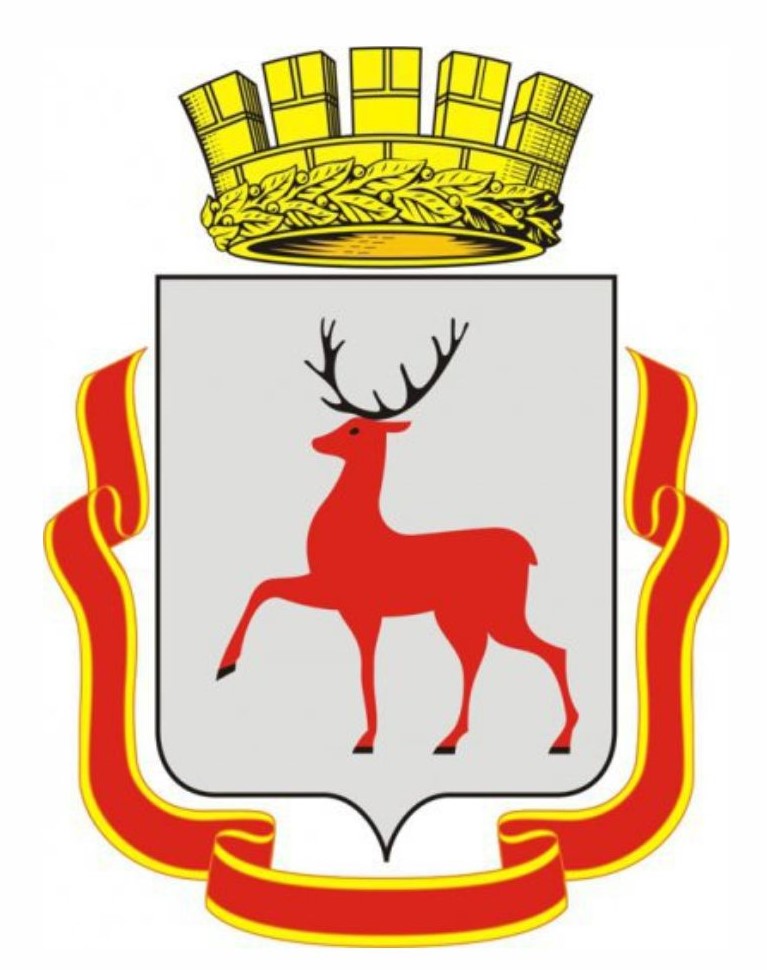The coat of arms of the Nizhny Novgorod Region features a red spotted deer with six-tined antler and black hooves running on a silver background. A proud animal, a kind of symbol of sublimity and greatness. But, oddly enough, there were no spotted deer in the Nizhny Novgorod Region earlier. Bringing noble animals has become successful and quite logical - it is strange enough why nobody thought about this before the idea was suggested by the then governor Valery Shantsev, an “outsider” who came from Moscow. The introduction of spotted deer began in 2000. Four spotted deer were brought from the Tula Region to see whether these wild animals could get acclimatized and do well in the forests in the Nizhny Novgorod Region. And a few years ago, excursions were offered to the town of Koporye, the Gorodetsky District, that have recently become very popular with travellers. Moreover, a GPS navigator first finds a village of Koporye in the Leningrad Region with the fortress of the same name that is a monument to the Russian medieval defensive architecture, and after specifying the toponym, the navigator gives the correct way. When we arrived, a bus full of tourists came.
“Last weekend, 300 persons came to visit this place,” the guard explained seeing my surprise. “Excursions are held twice a day”.
To be precise, this is the scientific and experimental breeding (reproduction) area “Koporye”. A family of the most beautiful spotted deer listed in the Russia’s Red Data Book (endangered-species list) inhabits this place. Now, the spotted deer’s number is 84 and another 250 animals have been already released into the wild. According to the organizers of the experimental reproduction area, the spotted deer population will be considered restored when their number reaches one thousand animals.

“We have created the required conditions for a calm and happy life for spotted deer,” Vadim Popov, Director of the State Experimental Hunting Facility of the Nizhny Novgorod Region, began the tour. “The area of our spotted deer farm is seventy hectares with everything the animals need, including ditches filled with water, trees, and shrubs. There is plenty of graze! We did our best to make their life comfortable. We also took care of the food for the new animals. What do they eat? Naturally, they eat hay. We have enough of hay. At first, we tried not to disturb the animals that arrived so that they would calm down and understand that it would be comfortable to stay in the Nizhny Novgorod Region. After a few weeks, the spotted deer got used to the environment and got used to the local nature, weather, and local people. The spotted deer felt they were ‘at home’ and would be happy here.”

“Spotted deer are native to the Far East. At the beginning of the 20th century, these animals almost disappeared from our planet because they were constantly hunted for their delicious meat, beautiful spotted dear hide (deerskin) and, certainly, for their velvet (unossified) antlers. In the Eastern culture, the velvet antlers are used to improve strength and preserve youth, for example, in China or Korea, and they are also used to obtain medicines. A velvet antler powder is added to various creams and lotions that rejuvenate and tonify the body, relieve inflammation. There are even baths with added velvet antler agent. These baths are recommended to treat various diseases, and the velvet antler agent is used to make neurotonics and immunomodulators,” he continued.
“Red spotted deer are very graceful animals; by the age of three, they become amazingly graceful and attractive. In spring and summer, you cannot actually tell a female deer from a male one, because the colour is the same at this age - bright red with white spots. And in winter they look different when stags become darker, and hinds (she-deer) are lighter. Adult animals grow up to one 1.8 metre long and over 1 metre tall. Their weight is from 70 to 120 kilogrammes. The spotted deer hair is about six centimetres thick. By the way, these animals are excellent swimmers and can easily cover a distance of several kilometres swimming. In the wild, the diet of spotted deer consists of ‘vegetarian’ food only. They like eating various herbaceous plants, leaves of trees and shrubs, fallen acorns and nuts, they can eat mushrooms and berries, bark, and young branches in winter. So, these are peaceful animals quite easy-going about food,” Vadim added.
“Every year, spotted deer with a ‘residence permit’ in Nizhny Novgorod Region have a ‘baby’ boom. For example, fifteen spotted deer cubs were born last year. All these animals co-exist peacefully and live together, although in the wild, female spotted deer with cubs live separately from male deer,” he said.
“Spotted deer are caring and attentive mothers,” said Nikolai Pronin, a hunter. “They always keep an eye on their cubs, ensure their safety, and milk them. And in the wild, if a spotted deer-mother feels danger and a predator is nearby, the animal confuses the enemy and leads the predator two or three kilometres away from the cub, and then returns to the cub using another trail. The spotted deer don’t like a hot climate. Temperatures above twenty-five degrees Celsius are hard conditions for them. In hot days, these animals can stay in the water from morning to evening. They don’t like rain either but endure the rainy weather easier than the heat. Our spotted deer’s favourite seasons are spring and summer. And these animals do not like loud noise as they get frightened easily.”
“If you do not startle a herd of spotted deer, these local animals will approach you. It is important not to come close to their fodder bin; and when entering the spotted deer area, you should step on the rug to disinfect your shoes. The spotted deer are hospitable, kind and non-aggressive animals. And if you bring their favourite delicacy (carrots), friendly communication will definitely happen between the animals and you. In very touching moments of feeding the animals by hand, our wild spotty deer resemble domestic goats in a children’s zoo. The main thing is not to give them too much food and not to touch their antlers and tails. The atmosphere in “Koporye” is really amazing. It seems that you find yourself in wild life areas, and the spotted deer give a lot of positive emotions: even adults rejoice like children at watching and hand-feeding these spotted deer,” he added.
“Once, one girl arranged a “nu” photo session in this pristine forest next to the spotted deer,” our guide Valeria Chernigina recalled. “Everyone came to watch this ... No, not every spotted deer came, but all the local forest rangers. It was very funny. The pictures were really amazing. The spotted deer added special flavour to the pictures. Last time, tourists found a few antlers here and took them for good luck. In general, communication with wildlife and the fresh air have a positive effect on the nervous system and mood. Indeed, two hours in this beautiful place is a real relaxation, and travellers enjoy their time and feel fine as if they spent their time at a resort. So, we have one more attraction on the Nizhny Novgorod Region’s excursion map and many grateful travellers.”


